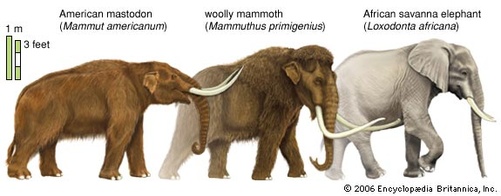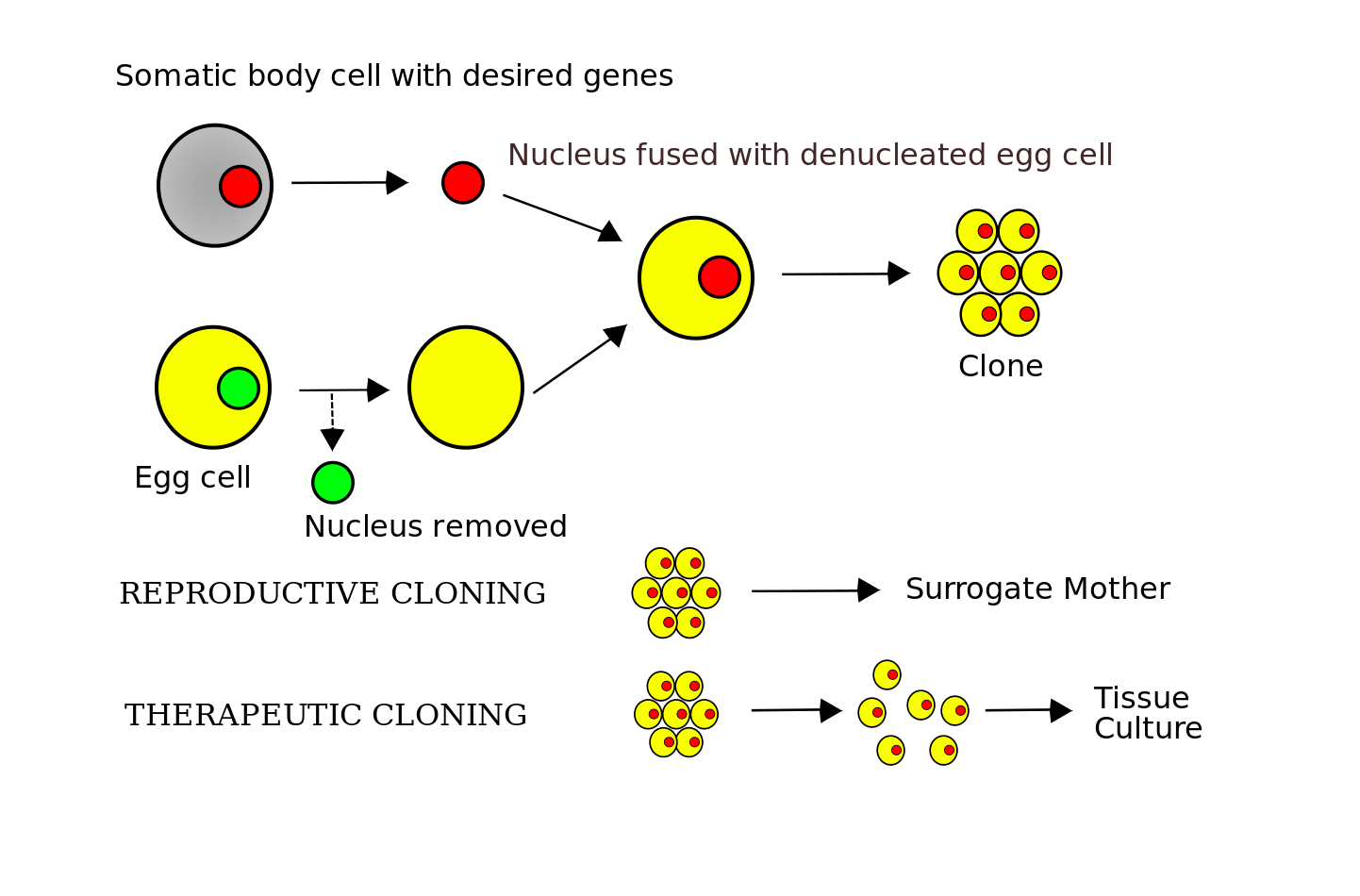While many, including myself, would love (or be slightly terrified) to visit a zoo and see a dinosaur in an exhibit, realistically, there is no way to create a real-life Jurassic Park. The beginning of life for any species involves DNA. DNA can be extracted from the cells of organisms that have been collected recently, or from samples that have been frozen for longer. Factors such as heat, water, and sunlight speed up the degradation of all molecules, including DNA. Dinosaurs became extinct 65 million years ago. Therefore, there is no viable DNA that hasn’t already disintegrated. But DNA can be extracted from well-preserved specimen, like a woolly mammoth frozen in permafrost, or a passenger pigeon preserved in a museum collection. In a recent study, researchers estimated that DNA preserved under ideal conditions could last around 6.8 million years until all the bonds within the DNA are broken.
It is easy to imagine the endless difficulties surrounding this concept of “de-extinction”, the idea that extinct species can be brought back to life. Not only are there technical/scientific obstacles, but also ethical and ecological concerns. For example, let’s consider passenger pigeons. Passenger pigeons were once the most abundant bird on the planet until the mid-1800s when people began hunting them for food. They were killed at a rate that the population could not recover from and became extinct. If passenger pigeons were resurrected, would that be okay? How would their existence impact the environment or the current species that took their place? Would they become invasive and destroy habitats? If so, would it have been worth the money and investment that could have gone to other scientific research which might prevent future extinctions or preserve/protect species that currently exist? Humans have become the root cause of the extinction of many species. If we bring those species back, will they cause harm to current ecosystems? Or, will they seamlessly thrive as they once did? As you can see, it’s complicated, and there are no clear-cut answers to these questions.
In order to explore these barriers, I will discuss the science involved in bringing back extinct creatures. There are three main ways that are being considered for de-extinction, which include back-breeding (a form of selective breeding), cloning, and genetic engineering.
Back-breeding is selective breeding for ancestral traits within a current population of living organisms. More simply, by selecting characteristics or phenotypes within current organisms that most closely resemble those of their ancestors, we can get nearer to an organism that more closely resembles its extinct predecessor. For example, if scientists were to find a really hairy elephant alive today, hairiness being a characteristic of the woolly mammoth, they could select for that trait until it becomes common within that population of elephants and more closely resembles the extinct woolly mammoth. However, there are limitations to this technique. For example, back-breeding can only occur when an ancestral trait still exists within a living species. This may only be the case if the species became extinct more recently and requires that the organism has a relatively short life cycle. Consider the case of back breeding to create mammoths through modern elephants; their gestation period is around 22 months, and elephants do not reach reproductive maturity for 10-12 years. This process would take a very long time, and while the results would be a modern form of the woolly mammoth, they would not be identical replicas of the woolly mammoths that used to roam the Earth.

The second technique that could be used for de-extinction is cloning. Many have heard of cloning and know that it has been used with various animals, most famously Dolly the sheep, who was the first-ever cloned mammal. Cloning for de-extinction involves removing the nucleus (the organelle which contains DNA) from a preserved somatic/body cell and inserting it into an egg cell, taken from a modern donor, that has had its nucleus removed. What results is an egg cell with the DNA of an ancient organism that can then be artificially inserted into a surrogate host in hopes that it will result in the animal from the extinct species. Unlike back-breeding, the resulting organism will be identical to the extinct donor. However, there are obstacles to cloning as well. First, cloning requires that you have an intact nucleus from the donor cell, which is less likely to be preserved over a long period of time. There are also the issues of immune rejection as well as the ethical concerns surrounding the safety and efficacy of the process. Reproductive cloning has been plagued by low-efficiency, with many clones dying during gestation or soon after birth due to serious defects and malformations.

Genetic engineering is the third approach that takes advantage of new technologies in both DNA extraction and DNA sequencing. This technology makes it feasible to construct a genome from ancient DNA. The ancient DNA sequence would be lined up next to a closely related genome of a living organism. The segments that differ between the two would be altered in the living cell so as to produce live cells with the genetics of an extinct species. The shortcoming of this approach is that there is no way of knowing the consequences of large genome editing on the stability of the cell.
However, at least some scientists believe this is a viable approach. In fact, George Church from Harvard University has been using preserved DNA of a woolly mammoth to “reviv[e] mammoth genes and make[e] a mammoth/elephant hybrid” (Knox). Church is using CRISPR/Cas-9 technology to cut and paste segments of woolly mammoth DNA into elephant stem cells and then insert the hybrid DNA into living egg cells. Rather than grow the hybrid in a live elephant as a surrogate, Church is attempting to create an artificial womb. To achieve this goal, in September 2021, Church helped launch a new company named Colossal, with the goal of, “place[ing] thousands of these magnificent beasts [woolly mammoths] back on the Siberian tundra” (Zimmer). The company plans on adding genes for traits such as dense hair and thick fat which can withstand the cold climate of the tundra. Within the next few years, they hope to produce embryos of these mammoth-like elephants.
You may be wondering, what is the significance and impact of this research? And why create an animal that could cause ecological destruction? According to Church, he believes that recovering woolly mammoths can help combat climate change and restore the arctic tundra. The concept is that woolly mammoths would feed on vegetation covering the tundra that has increased due to warmer temperatures, and allow the snow and water beneath it to freeze; thus, this would restore the arctic tundra to its former cold and frozen environment. Many are dubious about whether this is the most effective approach to fighting climate change in the tundra.
While our future may not involve dinosaurs and dodo birds, the fields of genetic engineering and de-extinction will undoubtedly continue to evolve. The totality of the impacts of resurrecting an extinct species are unknown and impossible to entirely predict. While bringing back the mammoth may help the tundra, it may also result in a cascade of destruction. In my opinion, the amount of resources and money required for de-extinction, although a fascinating task, is not worth the possible repercussions of introducing a species that died prior to substantial human interference.